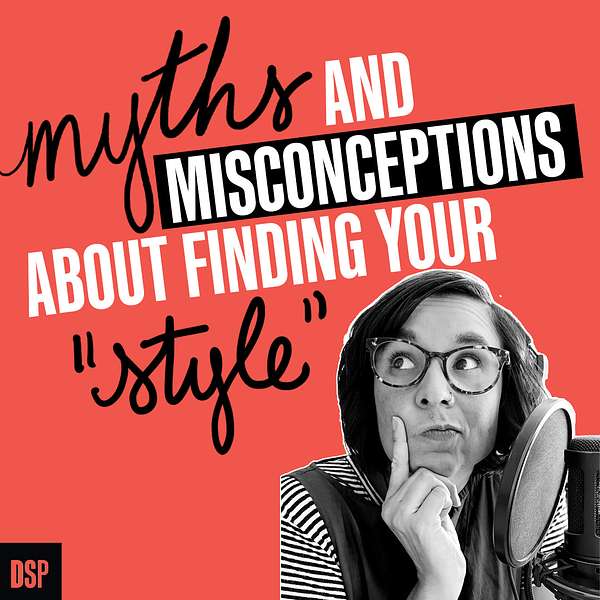
Design Speaks
Whether you're a seasoned designer or just starting out, get ready to be inspired, explore powerful design strategies, and unleash your inner design genius, you're in the right place. It's time to take control of your creativity.
Quirky Creative Director BrandiSea is here to show you how to find uncommon sources of inspiration, dig in to design process, and even chat with other amazing creatives in the industry.
Design Speaks
Myths & Misconceptions About Finding (or using) "Your Style" as a Designer - Part 1
This week, we’re going to be talking about finding your style and the lies we are told about how to do it.
Visit BrandiSea.com for more content and resources!
Brandi Heft-Kniffin 0:06
Welcome to design speaks podcast that empowers you to stay inspired, be creative on demand and find your visual voice. I'm your host, Brandi c, and this week, we're going to be talking about finding your style, and the lies that were told about how to do it. Stay tuned for that coming up later in the show. Hello lovelies, I am so glad that you're here. I have a special guest with me today. And I'm gonna introduce her here in a second. But I wanted to give you a little peek into what we're going to be talking about. There's a lot of, there's a lot of lies and misconceptions about finding your style, our style, and visual voice is another thing and your vibe, whatever you want to call it. And so we're going to talk a lot about that today. But first of all, before I talk about my inspiration, I want to introduce reintroduce I guess, Amber Anderson, she has been a guest before on design speaks where she came on to talk about the strategic process course and her experience with the process in general. And because I'm having lots of special guests for this season, I wanted to have her back. And she's going to be joining me a couple of times. So Amber, for those who did not catch you on the last time you were on the podcast, please give us your spiel, tell us a little bit about you.
Amber Anderson 1:37
Hey, everyone, super excited to be here and Thanks Brandi for having me on here. So the kind of professional deets, I guess is that I am an art director at a commercial photography studio and I also am a graphic design professor and I live in the Dallas Fort Worth metroplex area. And more interesting information, I think, at least about me is I'm super obsessed with cultures. I always say that the that living in India was the catalyst for that. And so
Brandi Heft-Kniffin 2:10
I didn't know you lived in India. That's so cool. Yeah.
Amber Anderson 2:13
When I turned 19 while I was there, but I was there for four months. Okay. That was a super subversive. Yeah, completely different culture experience, and I
Brandi Heft-Kniffin 2:26
loved it. So very intense culture. Yeah,
Amber Anderson 2:29
very different. But I absolutely loved it also where I had to be forced to love spicy food. Which is a great thing now since I love Korean food, and they always have spicy food. But anyways, I love culture. And I love designing culture and the talking about reading about the intimate relationship of designing culture and stuff like that.
Brandi Heft-Kniffin 2:55
And Korean is is like the culture that you are just currently obsessed with or that is like, your culture. Like Parisian culture is my culture. It's like, I feel like that is where I belong.
Amber Anderson 3:09
That's so funny is that I have a friend that lives in Korea, and he often asked me Are you sure you're American? Are you sure you're not Canadian? I'm like, I know. I feel like I should be Korean. So it's been an interesting journey to learn about Korean culture. But all of the ones that I have learned in depth, I don't know that soured and definitely it's not a word.
Brandi Heft-Kniffin 3:32
Sure. Why not? We make I make up words all the time.
Amber Anderson 3:38
I do resonate more with Korean culture. I don't know why. But I do.
Brandi Heft-Kniffin 3:44
Well, that's part of it. Right? Like I just feel like somewhere along the way, my soul is Parisian is French. I did find out that my dad's side of the family is is from the Basque region of Spain, which is like Spanish French. So I actually have it somewhere far back in there. I guess you have something to say about it. But no, I think it's really awesome and I always love seeing the stuff that you post about like the typography that you're finding and like the Korean music and I don't actually listen to the Korean music. But my my daughter's some of my daughter's best friends are actually from South Korea. So So we've had like authentic Korean barbecue and like, they still are very fluent. They are very fluent in Korean and as basically English was their second language so so I've got a taste of it, but it's definitely not my thing the way it is your thing but I love it. I love that we both have like those, those things. So I don't know if you were prepared for this. I'm pretty sure you weren't but I'm gonna let you go first because I have to fix some audio really quick but keep talking. There's not gonna be a cut where we're just recording So, tell me what, what has been inspiring you lately, like, if anything this past week or months, obviously we haven't talked to you in a while. So what is something that has been inspiring you?
Amber Anderson 5:12
And actually, I think this is somewhat interesting for me. And I've been working on rebranding my company, and I counter print books has, like a collection of books, or have designed I guess, from different parts of the world. And so I recently got from, I think it's Latin America. But me Yeah, Latin America. And I thought that my books like from South Korea, and Japan would be what I found more inspirational. But this actually, for our branding, like hit the spot. And I thought that was interesting that I'm seeing in different ways like me, gravitating towards like Aztec design, or, like, Latin American design. I think that's interesting. Because I, I grew up in a primarily Hispanic culture. So I think I kind of was just like, used to it. And now that I've been away from it for a while, like gravitating, okay, design of it.
Brandi Heft-Kniffin 6:16
Yeah. That's awesome. Oh, my gosh, counter print books. I don't, there is not enough money in the world. Like, I'm just like, I have to get off of this count right now. I'm just gonna put all of those on my Christmas wish list. Like,
Amber Anderson 6:32
I always had to open up the tab of like, can I? How many? How many? US dollars? is this? Because it didn't grows? Because I see the years. I'm like, that's not that. And then I look it up. And
Brandi Heft-Kniffin 6:46
it's like $1 difference, usually
Amber Anderson 6:48
shipping because shipping is like killed. Oh.
Brandi Heft-Kniffin 6:53
Yeah, I know. So that's awesome. And those are also on my list, like the regional sort of design book. Yeah, I have not purchased any of those yet. But there's so many things that I have, like on my list that are awesome. And look really great. So that's, that's awesome. I, I would love to see like some, some pages that you that you really love, like, what do you have marked sometime, sometime in the future, you can share that. As far as my inspiration. So these are actually these episodes actually going out pretty close to when we're recording. So I thought it was appropriate to talk about all the inspiration that I found on my trip to Chicago, because it you know, as always, everybody knows how obsessed I am with travel. And I'm always looking for inspiration when I'm on trips. But I think this time, even though I was working on some specific clients, I basically have already, like figured out my concept for both of them. And like I have all my style references and all my uncommon inspiration and most of that I got from my trip to LA but for this time it was it was more just like less a little bit less hyper focused on looking for things that I can use for a specific project I have now and more just like looking for stuff that is in like the repertoire of things that I generally look out for so like textures or patterns, or I didn't actually actively look for color palettes this time, which is something that I I did not realize I wasn't doing until I like went back and looked through like all my pictures and Oh man, I didn't take a lot of pictures of color palettes this time. But I did the last time we went to Chicago so I think that might be why like I shifted to thinking like this time I'm going to capture some like a different aspect of Chicago than I than I did the last time so the thing that really inspires me about Chicago and I know that I said this last time I talked about my trip when I went two years ago was the head Chicago is like New York and San Francisco had a baby. And it is like a perfect little like World of kind of both of those two so and in San Francisco. It's like a big city right? There's tons of people but because of the way there's like so many hills and the way that neighborhoods are laid out, and like just the vibe of the city it feels very not like a huge city but it has all the big city things. There's not as many big buildings they're more like medium sized to skyscrapers in some areas. But there's a lot of smaller buildings whereas like New York right is like just concrete jungle like all over the place aside from like the parks, Central Park and like the smaller parks around wall and there's not a lot of like close by nature unless you're like out on the outer edges like by jersey and stuff in New York. So in Chicago. You are on Lake Michigan and it is like right up against Lake Michigan. There's also a huge park called linkin park which we went to this time and the There's like a river that goes all the way through the city, sort of like San Antonio. So it is it is very much like these two personalities have my two other favorite US cities like kind of merged into one. So Chicago has easily fallen into like slot number four. So it's like Paris, San Francisco, New York and Chicago. And they have the most incredible architecture, they are really well known for their architecture. And because it is such an old city, you just walk over things that are, you know, similar to New York, but something about, like the attention to detail, and every single thing they have at the Macy's building. It's the Marshall Field's building, they have this thing called the Tiffany, the Tiffany dome, that so basically it's it's like a ginormous, Macy's, it's like a eight story. It's like an eight story Macy's or something. And if you like stand in the middle of like the first floor, when you walk in and you look straight up, there's like all of these floors with all these incredible, like Corinthian columns holding up everything. So for those of you who don't know what Corinthian columns are, they're like the columns that have like all of the really ornate stuff like around the tops and bottoms, like where they hold. But leave a look up. And it's like this really intricate glass mosaic. I guess I mean, it's a dome, and it's huge. And so things like that are just everywhere that you don't even have to like pay to them, you go to a museum to see this is just like in the Macy's. And they have. The Chicago Cultural Center also has another Tiffany dome, which is similar but different. So I'm guessing that a Tiffany dome is just like the style of Mosaic, I probably should have researched that. But
there's, there's just so many things, so many details. And it just was a good reminder to me to, like not just look at the big picture, I talk, I often talk a lot about the overarching concepts being the most important. But I think I also talk about the details that go into that, especially as part of the process. So you get the concept. And then you find all the little things. But being in being in Chicago and seeing all of this stuff that has so many details, so many mosaic so many, really thoughtful, like, man, I just keep saying details, there's probably a better word I need to Saurus. But every single building from far you're like, that's really nice. And then you like walk up to it. And the floor has all these inscriptions. And like in the library, they have words like a phrase in, in like every language of the world up on the walls. And they have one of the really amazing Tiffany domes in the Chicago Cultural Center, which used to be a library, you look up and it's so far up that it's like, oh, that's really pretty and because I take a zillion pictures and I always zoom in US end up zooming in. And you see that like around the circle part there's like a whole bunch of all of the astrological symbols and like a whole bunch of words in Latin and there's just like so many things that we could have stayed in like one building for hours just like figuring out what all of these things are and the history of it and like who built it and found a lot of really beautiful monograms which is something that I am still like in progress working on for a client I'm working on a monogram for some branding that I'm doing. So that was really inspiring. And I think that next time I grow we'll have to see cuz I think this time I captured a lot of detail. And last time I captured a lot of color so it was it was it was amazing. And the some of the hotels that we stayed in we stayed in two different hotels. One of them was right on Navy Pier, which is like an old military pier so it's not like the piers on California where they're like constantly look like they're on sticks and they could just fly away it's like a legit pier and it was like on the water and the views were like to die for so I'm a sucker for a big city view. So yeah, that's that's a lot. I told you it was possibly gonna be long winded and that's like the really short version, but I'm going to be making hopefully some like posts and stuff on some of the stuff that I found because it was it was amazing. Three days, three days but not enough.
Come with me.
If you're new to design speaks podcast, I always bring a song that's been inspiring me, I'm really big into music and music is a huge part of my process. And so I really enjoy sharing the songs I'm listening to with you guys. So this week's song is called light up the night by Jamie Berry, Robert Edwards, Andrew Griffiths and Octavia rose. It's on this amazing electro swing playlist I found on Spotify over the summer. And it's really a great mix of swing era 20s with new 20s. And I just really love it. The swing era is one of my favorites. It's some it's an era that I really connect with on a lot of levels, especially the fashion and so this song is now a part of my repertoire of music that I'm going to be listening to a lot. The line that I really love the most in this song that they say a whole lot is you and me, we could be such a sight Don't you see, we could light up the night just like go, Whoa, boy spinning around my feet, don't touch the ground. Let's get high on tonight, you and I, I really just love the energy behind it. I love the instruments. I love everything about it. And I really hope that you will check it out. You can find this song and all the songs that I featured in past episodes, and I will feature on future episodes on the playlist. Music from design speaks podcast over on Spotify.
Amber Anderson 17:02
What you're saying? I think that's interesting, because like with design, like designs that are over arcane, you have guys like Oh, this is so cool. And then when you get captured, like really captivated by the small details. Is there my favorite one? So that's really cool. That's all in Chicago.
Brandi Heft-Kniffin 17:19
Yeah, it is. It's and it's It is designed and it is. So just like, that I like to look for See if you can find some of them have like, the architecture or the architects like signatures, like sometimes in the pavement or something. And I like those kinds of things, especially when we go to museums. I'm always taking up close pictures of like the signatures of the artist because it is it is so you know, James, Victoria is the one that really taught me like, sign your effing work, like sign your work, because it's yours. And obviously, as designers, we can't always do that. But when we can, especially when it's something we're making as a personal project, or poster or something we're going to, like sell or give out. That's how, you know, through history, people sign their work, they sign their name, that is this is mine. And so I guess that's kind of a good lead in I didn't expect that but a good lead in into like finding your style, like what is your What is your signature? Like? What is your stamp your name? How do people know that it's yours. And so with that, we can talk about our topic for today, which is the whole idea behind finding your voice finding your style, we wanted to talk a little bit about kind of where each of us has got our ideas about that in the beginning, and how that has evolved to maybe where we are where we are now. So let's talk first about before we jump into like any clear definitions, or what we believe to be clear definitions of what style voice all this stuff actually means. I want to talk first about what we were taught early. So for me early was time ago, land far far away. But we'll talk first about you and sort of what you have been had been taught early in school about what your style is, what it could be what it's not.
Amber Anderson 19:39
And so I actually had a professor and he came in toward me from, I think, junior year of undergrad all the way through grad school. And I would say he probably is still a mentor but this not in the same way. When you're a student, but he actually pushed against this notion of developing your own style as a graphic designer, because I guess as well, I don't know if it's like, necessarily common, I see young designers or beginner designers to do this, because I know that there are designers who do this, even though they've been like in the game for, I don't know, 20 plus years. But the reason why he pushed against developing your own style is because you're going go to colors or typefaces or, you know, whatever graphic elements that are comfortable to, you don't always solve the problem of every single project that you're working on. And so that's why he pushed against that notion of developing your own style. So for me, I learned not to have a specific style. And that makes you more marketable, in a sense.
Brandi Heft-Kniffin 21:08
Yeah, I would say that, for the most part, that is, that's probably a similar thread. And I think that is, it's definitely something that I was taught as well, especially, you know, I started design school in 2001, officially, and so when I started, the, the degree I was actually going for was called advertising art. It wasn't even graphic design, at that time. And so especially when you are considering going into advertising, you're literally just going to be speaking, potentially, is what I was taught speaking the voice of your client and you, it doesn't matter about your ideas, except that they need to make the company look good. And while on some level, I agree with that, I think that for a long time, I was either indirectly or directly taught over the seven years, it took me to finish design school, that your voice does not matter. your opinions don't matter. We want your creativity, but we want it to be filtered through the voice of our brand. And so I think I think I kind of took that, as I don't get to have a voice. And early on in my kind of early on in my post graduating career, I was still very much believing that and teaching that to the design team that I was leading that like look, I want to see your ideas, but it has like, if you like this, that or the other thing or you are drawn towards this thought of the other thing, it's possible that that's probably not going to be the best solution. Because it doesn't look like this. But over time I started I started seeing that voice and style and style references and being able to under underpin the brand personality of a brand is still possible while doing something in your own way. And so I didn't actively start figuring that out for myself for a long time. But I was able to figure that out with working with other people seeing working with so many designers, as team members of mine, thinking like, what am I doing, like squelching their creativity, basically, because otherwise, you're just creating a bunch of what I call technicians. And it's, that's, I feel like it was sort of like a weird contradiction in art school, right? It's like, we want you to be creative. We want you to have all these cool ideas. But you can't, you can't have your own thing. You can't have your own style, you can't have your own voice. So I think that we are both definitely in the same in the same sort of education which bothers me because that was taught to me so long ago, and you did not graduate that long ago. And the fact that they are still kind of pushing this mindset on designers is problematic for me because I don't think that it has to be either or thoughts.
Amber Anderson 24:46
And, well, I guess for me like the the big kicker lies in the difference between a style and a voice like I see those as two different things. So I don't necessarily disagree with what my professor taught me. But I don't think that he pushed this idea like what you're saying that you can, you know, be true to yourself, you don't have to likely talk about Don't be the clients mouse. While the way to not be the clients mouse is to have your own voice, I think and be able to be able to defend your decisions and that way. So I don't think that he talked about that enough. And that's something that I try to talk to my students is you can have your own voice, but it's different than having a style in my opinion.
Brandi Heft-Kniffin 25:48
Yeah. And I agree. I do think that and like a lot of things, I think some of where I finally was able to somewhat differentiate this came came in sort of steps for me. One was I was taking well, as all as often happens with as you said, you're working on your own brand, and when you when you have the opportunity slash worse choice ever to rebrand yourself. Um, you kind of like go through this, like crisis of like, what am I doing? And why even know who I am? And what's happening to my life? And am I even supposed to be doing this, like, and over the years, so I went to school with a guest of the show a friend of the show, call him my adopted brother, Dominic sitio, always told me, like, Hey, we call each other pal, he's like, pal, I can see or I can see your style. Like I, I don't even have to know that you made it. Like I could pick your stuff out anywhere, which was always sort of like mind blowing to me, because none of my stuff looks super similar. Because I always have a different concept that like it usually, like, I'm still, I was still at the time that he told me that figuring out even how to not just take on the voice of the brand. So in my mind, I was like, thinking this was like not okay, I'm like, how can you see my style? It's supposed to be like, in the voice of the company. And he's like, no, like I can, I can see it, I can tell that that's like a brand new design. I'm like, okay, still, like, it was mine. I couldn't see it. I didn't see it. So years, years later, I'm trying to figure out my own brand. And my husband reminds me to go through my process because I was freaking out. And then I started treating myself like a client, and started to realize that like I do have, I do have these things that I often do. So I like. And at the risk of hoping that most of the designers listening this podcast understand what I mean by simple, I'm going to use simple because in this context, it means a little bit minimal. So I tend to design with as few things as humanly possible. It's what I call design math. And I think I've talked about it before, where you look, and instead of saying, What can I add, what can I add? What can I add? I finish a design to a point of like, a comp, and then I think, what can I take away from this and have it still be effective? What can I take away from this and have it still be effective, and I've always done that. And I started to realize, Oh, this is what he means. Like, this is the way that I work. This is this is like a style. It's not necessarily my voice. My voice looks like at this point in my career, so I'm going to jump jump a bit ahead my voice now is contradictory things. I like there to be some sort of contradiction in the designs that I do always whether it's with it's a it's sort of a works well together contradiction kind of thing. It's sort of like flowers and, and polka dots don't really go together but like, they can work together. And I don't always use those in my designs or anything Actually, I never do but just as just as like an example, those contradictory things that can balance each other and work well together. And so that is a style that I that is a voice that I have, but the the voice and the style work together to create, like how I design is unique person. And where I started to also really thoroughly understand this was when I I went out to the James victori Ranch to do his retreat. And this was right around the time that I was really trying to figure out like what am I doing and What is? What is what is my voice? What is my style? Like? Do I have? Do I have what it takes to like, be an independent art director and creative director and I was just starting the podcast, and there was just a lot going on. And so going back to the thing about signing your work, he talks a lot about finding the things that you are drawn to.
And understanding why you're drawn to them. And those become elements of your voice and your style, and that they are separate things. But they kind of don't always exist without one another. And that was a little bit of like, Oh, I'm starting to see like the symbiotic relationship. Now it is, it is not, it is not black and white. And it's like black and white. But then like the gray in the middle is like, the happy little place where they exist together. So I'm gonna let you talk for a minute. Because I've been talking for a long time. Do you agree? Do you not agree? There's apparently a lot of things happening while we're recording this podcast, because I forgot my automatic Roomba was gonna go off at this time.
Gotta go just like Close the door. But I'll just be gone for a second. I want to hear your thoughts. Because I've said a lot of things.
Amber Anderson 31:20
I had to digest that you said, because I think that's interesting. style and voice, kind of have a having a symbiotic relationship there. I do want to say I don't think it's bad to have a specific style. My issue is the push to develop yourself as soon as possible in your career. Whereas I see it as kind of a, it's just something that naturally happens. As you design or create more, you start observing how other people do certain things. You're like, Oh, I want to try that out. And you kind of put your own twist to it, you know, maybe I don't know. And your style develops naturally. But I just see so many people like how did you develop your style? Like, how do I develop my style, it's like this weird, like, that's the end goal thing as a creative is to develop your style. And that's what I don't like about it. But this was a little bit hard for me to, I guess, figure out how to put into words. And that was like, Well, first of all, until I heard what you said, I saw style as something that was, like replicable. So like it was specific colors were like graphic elements, typefaces that maybe you as a designer felt comfortable in, and so they're your go to, and so a style, you could easily recreate and that's why, like anyone could look at Swiss design and do that. Okay, here's the five key important elements of Swiss design. And anybody can recreate this design or art deco or whatever. But voice I see as more as like a representation of yourself through what interests you, and therefore inspires your work even down to kind of how your brain uniquely thinks and works when you're creative problem solving. So kind of like what you were saying if someone was to look at my portfolio, I don't think that before you spoke, I don't think that somebody would be able to see a specific style but you could definitely see my voice and see what I'm influenced by. And definitely Asian culture i don't know
Brandi Heft-Kniffin 33:47
that i did i like freak you out. Somehow.
Amber Anderson 33:52
Not like freak me out. It just had I guess I have a lot to think about still on this topic. But I do think it's interesting because I've always kind of felt like there is a inner battle inside of me sometimes depending on a design project. Like I've had, you know, freelance projects where the client knows that I'm very inspired by Asian culture and they also love Asian culture. So they told me like it's okay to be inspired by that as long as it works for the brand or whatever, like the final outcome. But then I've also had, you know, my, my boss at work, they're like, I know you're inspired by Asian culture, ampere, but like, that has no business here. But I don't agree with that necessarily. Because there are certain things that they do with illustration or typography, like whatever, that you can make it appropriate to Western culture, right and be inspired by
Brandi Heft-Kniffin 34:56
this conversation with Amber was so good. I just couldn't cut it off and are normal time so we decided to make it into two whole episodes. So make sure you come back next week for part two. Thank you lovely people for being here. Be sure to leave us a review on iTunes and you can always send us a note over on Instagram at besides these podcasts. You can find all current and past episodes at design speaks podcast calm design speak is produced by Kenneth kniffin and Dakota cook shout out to Collin from vespertine for our theme music design speaks is a project of brandy see design CO and is recorded in the shadow of the watermelon pink Sandia MOUNTAINS NEAR Albuquerque New Mexico. As always, I'm Brian DC, reminding you that you can take control of your creativity. Thanks for listening
Transcribed by https://otter.ai
Podcasts we love
Check out these other fine podcasts recommended by us, not an algorithm.
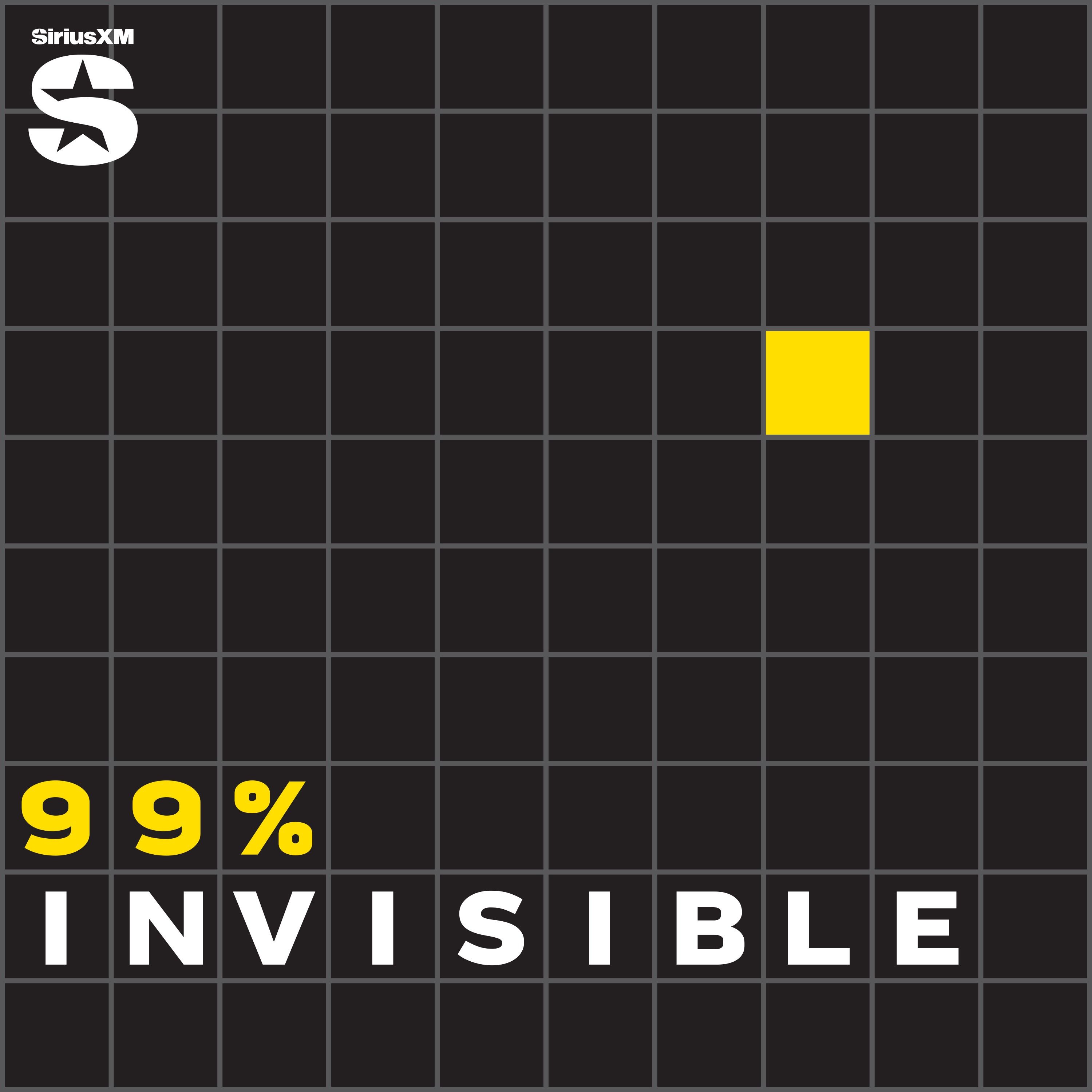
99% Invisible
Roman Mars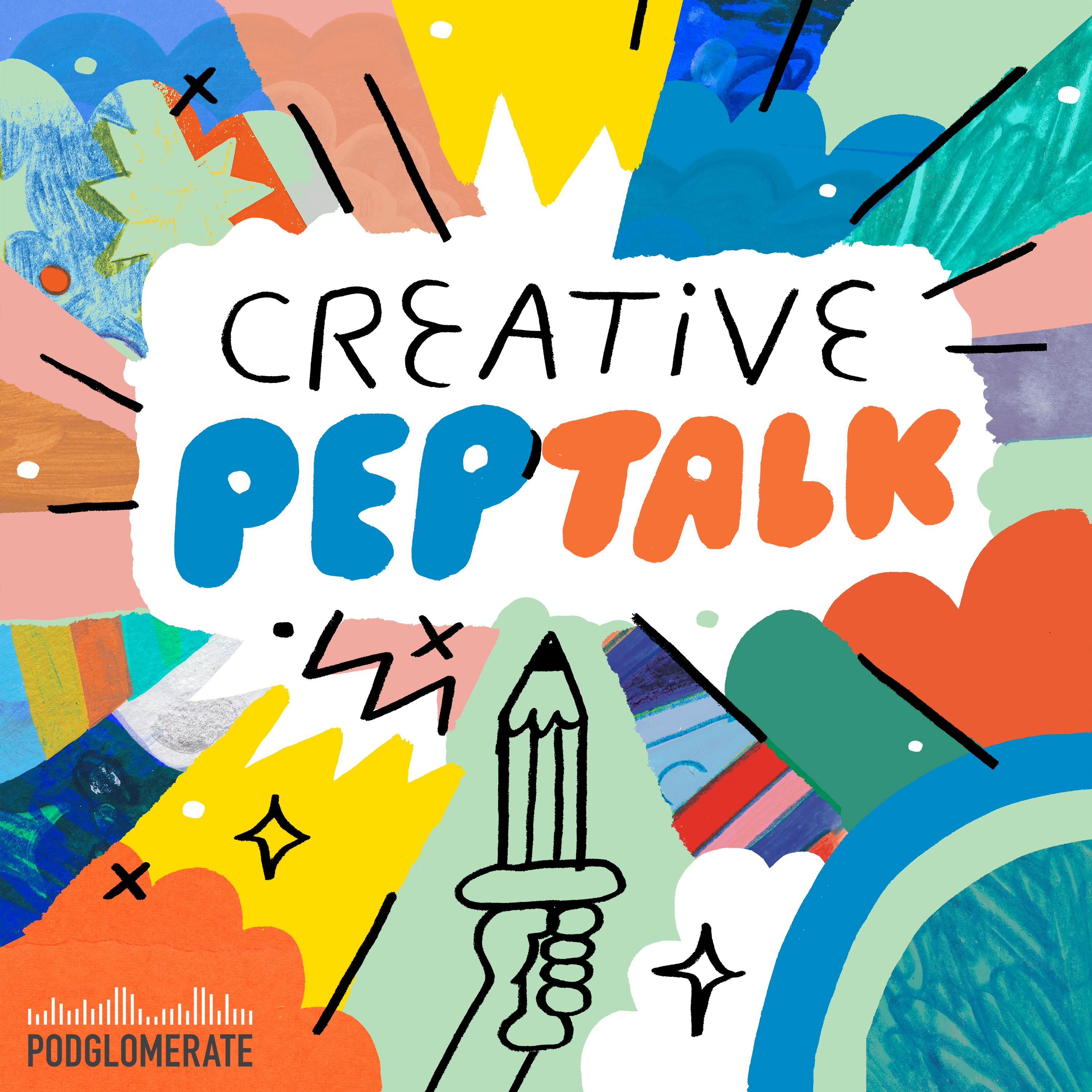
Creative Pep Talk
Andy J. Pizza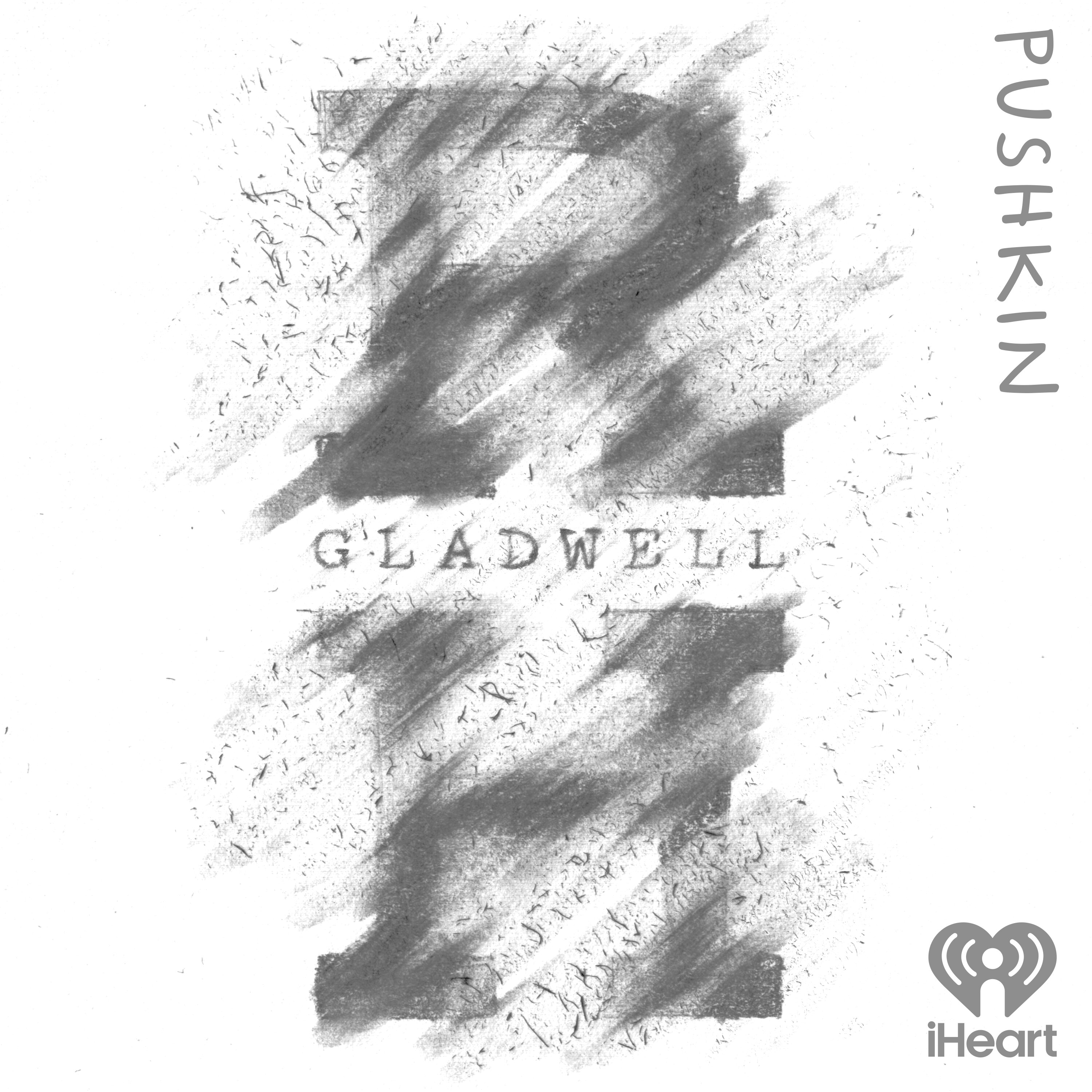
Revisionist History
Pushkin Industries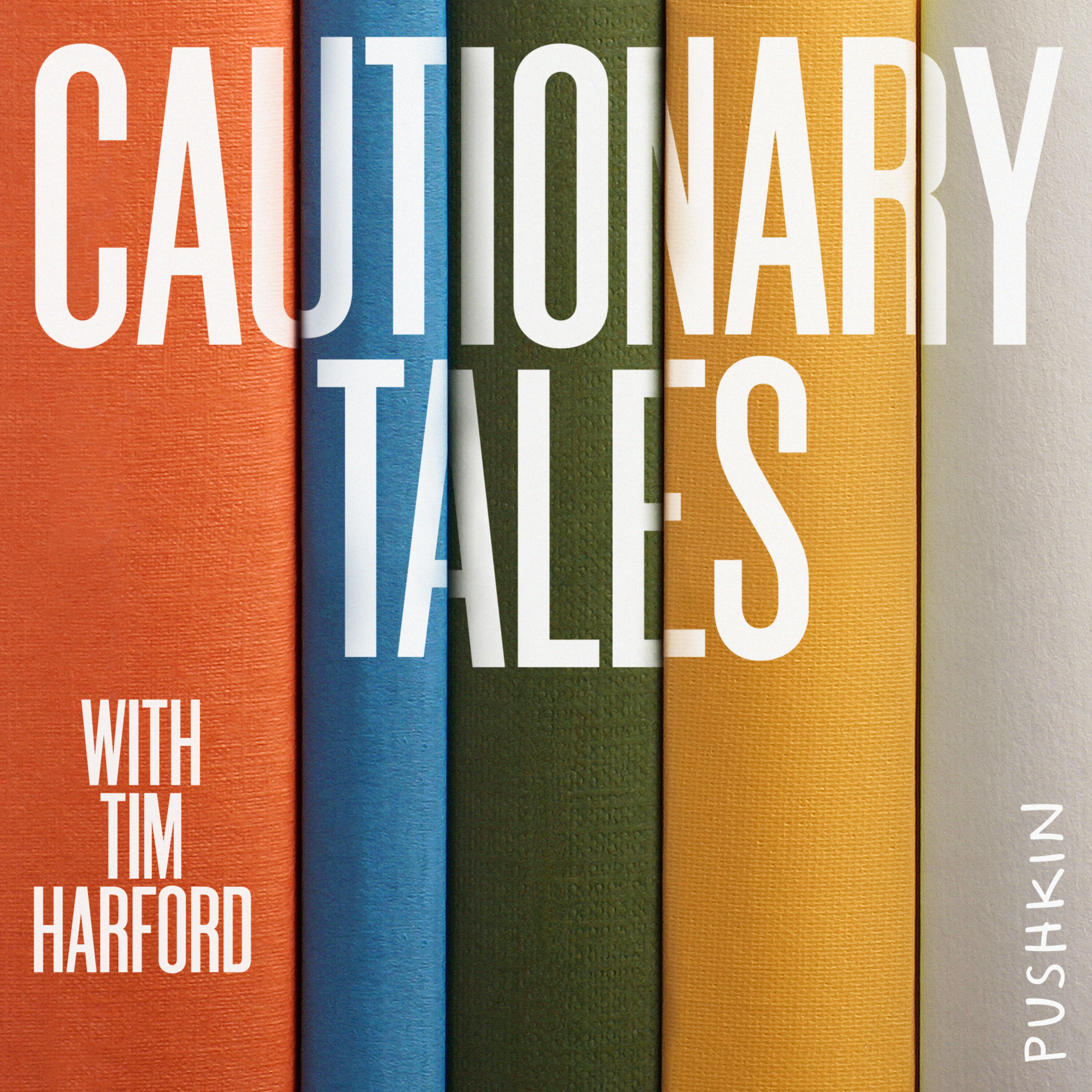
Cautionary Tales with Tim Harford
Pushkin Industries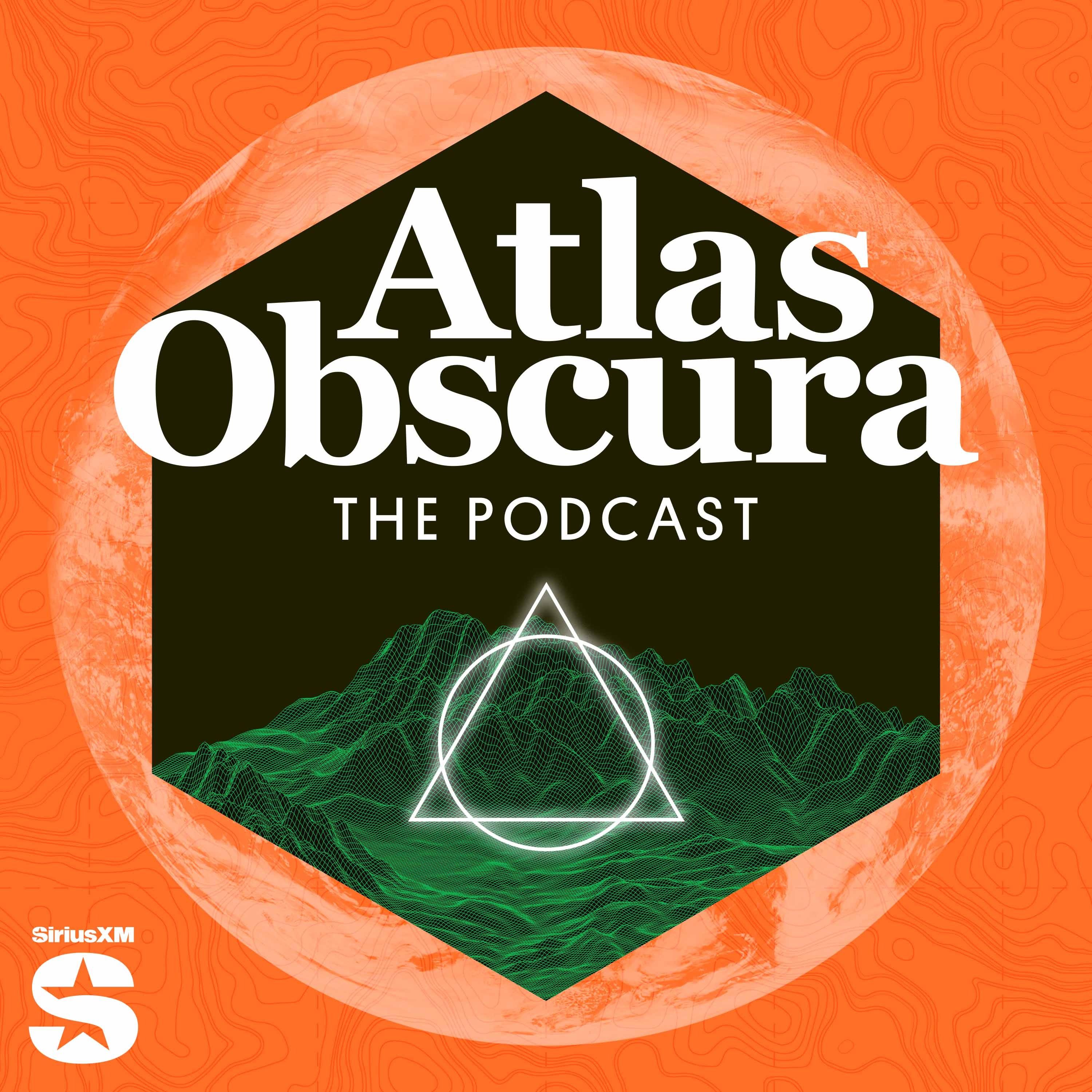
The Atlas Obscura Podcast
SiriusXM and Atlas Obscura
